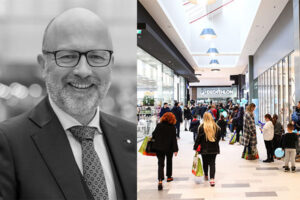There is a sense of urgency in our city centers and high streets, and there is no time to waste in addressing the dichotomy between our dependence on physical retail and its decline. The Internet has taken business away from physical retail. However, I passionately believe that the Internet will fail to kill high streets – it will liberate them. It will free them from the shackles of the mediocre “cookie cutter” retail trade, which has lost its relevance to communities and consumers.
If we seize the opportunity to re-imagine our high streets as compelling places for communities to gather, engage, and return, there is reason for optimism. The emphasis of our high streets must be shifted from a “shopping rhythm” to a “community rhythm”. We should urgently transform old “mixed-use” silos into connected “blended-use” spaces in which workplaces, residential, education, hospitality, health and wellness, production spaces, and community facilities seamlessly blend with retail, F&B, and entertainment to create the “connective tissue” that can activate our public realm and foster constant footfall and engagement, while driving value above ground.
To accommodate this shift, we will need to adopt a “community curation” approach that transcends “leasing boxes” and creates a lively commercial heart for our high streets, framed by a compelling mix of usage typologies. This approach will play a major role in reconnecting our high streets to their communities.
Imbuing our high streets with a truly authentic “spirit of place” will involve a mix of unique experiences that align with the community and reflect the essence of the place. A “future-ready” masterplanning approach will facilitate the programming of our high streets, while blending local independent companies and start-ups with national and international brands to provide both permanent and transient experiences. The introduction of flexible leasing models will also enable us to retain good tenants while attracting new players, and high street incubator platforms will be created.
As many physical stores shift from focusing on transactions to attracting customers, they will increasingly begin to function as media. Fixed leases will become impractical, so new data-driven leasing models will need to be developed to show how physical space can drive media impressions, social media engagement, and downstream e-commerce. This will serve as one of the many new ways to evaluate physical space. In addition, the retail sector has become increasingly polarized, with autonomous, hyper-convenient, zero-contact experiences at one end of the spectrum and immersive, participatory experiences at the other. We have also seen the growth of the “by appointment” and subscription economies, both of which have been accelerated as a result of COVID-19. Our high streets must embrace these new models and experiences, which are not driven by the real estate industry, but by citizen and consumer expectations.
COVID-19 has also accelerated the focus on wellness, which has ceased to be a purely commercial category. Physical and mental wellness must form part of the DNA of our high street. A biophilic approach to the design of our public spaces has become a priority. This extends beyond “greening” to broader sustainability and connection with nature through the use of natural materials, water, light, as well as open spaces featuring the sounds and scents of nature.
We are entering an era in which people demand genuine values and experiences that deliver surprises, newness, and serendipity. Our goal should be to create places that are “serendipity machines” – to build anticipation and encourage commitment as well as repeat visits and a real sense of belonging. As Alain De Botton suggested in his book “Architecture of Happiness”, we need to bring “back-of-house” activities, such as production, training, workshops, artisans, etc., to the public sphere in order to generate interest and intrigue. Let us make sure that all involved parties work together to rediscover the highs of our high streets.





